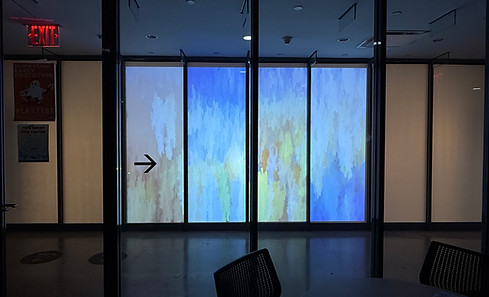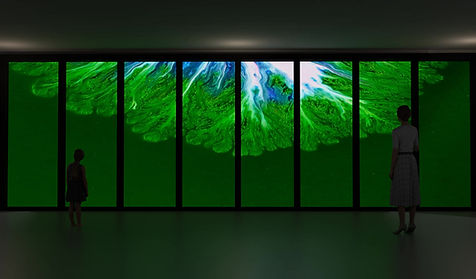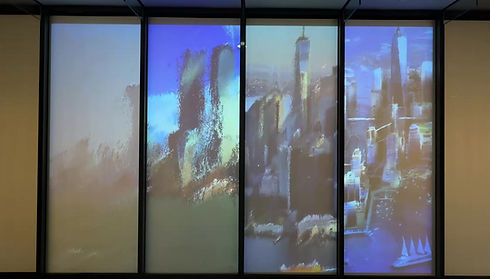
City in Flow
City in Flow is a data-driven projection installation that renders New York City's water usage and quality as a living, flowing visual landscape. Projected onto a transparent glass surface in a public passageway, the installation transforms statistical patterns into continuous, dynamic streams of water—visualizing the evolving relationship between the city and its most essential resource.
By placing a stream of data in constant motion on an architectural boundary, the work dissolves the hard edge between infrastructure and environment, presence and information. Viewers don’t interact in the traditional sense—they witness, pass through, and perceive. The result is a meditative experience where the boundary becomes fluid, and the city’s invisible systems are made visible.
Year of Creation
Type
2024
Projection Mapping
Materials
Glass wall, real-time NYC water data, water projection, ambient light, public architectural corridor

3D Scanned Space of Hallway

In Dark Space

Rendered Sketch (Ideal Version)

Final Set (Only four glass wall can be projected)
Concept
Rooted in the notion of boardlessness, City in Flow challenges our perception of spatial divisions—between built and natural, private and public, urban and ecological. The glass wall, often understood as a separator, becomes instead a responsive membrane: translucent, permeable, alive.
This work draws from the idea that data is not abstract, but embodied—that resource flow tells the story of a city’s metabolism. Water, though ubiquitous, is often unnoticed in daily urban life. By transforming real-time data into an ambient display, the piece brings this invisible rhythm to the surface.
Video Documentation
Data as Motion
The flow of water projected onto the glass is governed by two live streams of city data: water usage and water quality. As consumption rises, the current intensifies—becoming fuller, faster, more turbulent. When usage drops, the flow slows into a thin, fragile stream. This shifting pace turns infrastructure into rhythm, allowing the city’s thirst to be felt in motion.
Water quality, too, becomes visible. Clarity and brightness shift in response to real-time purity levels. When contamination rises, the stream becomes dimmer, slightly tinted—subtle cues that turn distant data into present concern. These fluctuations create a landscape that is never still: the projection breathes with the life of the city.
Glass as Interface
The installation is designed for a glass boundary within a public corridor—a space of transition, often ignored. Here, the projection reclaims that surface, turning it into a quiet monument to fluidity and connection.
The use of transparent material emphasizes permeability: rather than blocking movement, the screen invites gaze. The projection does not demand attention, but gently reorganizes perception—allowing passersby to experience data not as information, but as atmosphere.